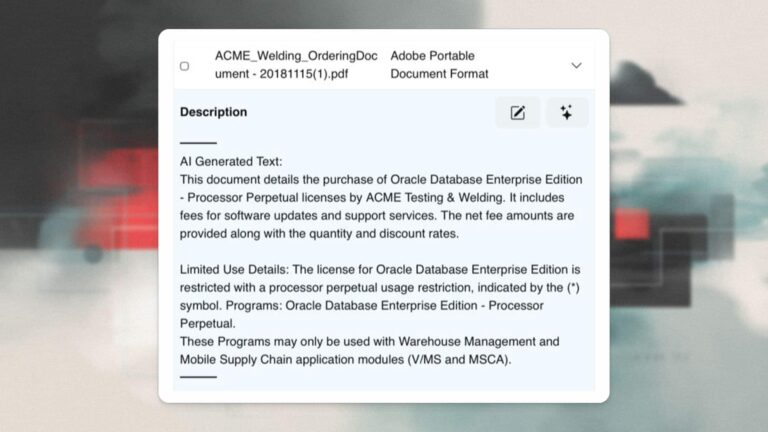The Good: Oracle Database Appliance (ODA) Performance & Benefits
Oracle Database Appliance (ODA) is marketed as an all-in-one solution that simplifies database deployment and management. And in many ways, it delivers. Organizations looking for a pre-integrated, optimized database system find ODA appealing due to its easy setup, high performance, and automation capabilities. It’s a great fit for businesses that need predictable, standardized database environments without investing in a complex infrastructure.
Why ODA Stands Out
- Preconfigured for Oracle Workloads: Unlike generic hardware solutions, ODA is built specifically for Oracle databases, ensuring a level of optimization and support you won’t get elsewhere.
- Simplified Management: The appliance comes with automation tools that handle provisioning, patching, and maintenance—reducing the workload for IT teams.
- High Availability and Performance: With built-in storage management and Oracle Real Application Clusters (RAC), ODA can support mission-critical applications with minimal downtime.
But, as with any technology, ODA isn’t perfect. And that’s where we move into the bad and the ugly.
The Bad: Oracle ODA Performance Issues & Misconfigurations
While ODA is a robust solution, it isn’t immune to performance issues. Many organizations assume it will deliver peak efficiency right out of the box, but in reality, getting the most out of ODA requires careful tuning and optimization.
Performance Bottlenecks & Misconfigurations
- Resource Misallocation: CPU, memory, and storage must be properly allocated to match workload demands, or you’ll quickly hit performance limits.
- Workload Balancing Issues: If transactional and reporting workloads aren’t optimized, performance can degrade significantly.
- Storage Management Challenges: Poorly configured ASM and ACFS can lead to inefficient storage utilization and slower query response times.
- Neglecting Patches & Updates: Many businesses fail to keep ODA firmware and software updated, leading to avoidable bottlenecks and security risks.
While these challenges can be frustrating, they’re manageable with the right strategies.
The Ugly: Oracle ODA Pitfalls & Troubleshooting Tips
ODA has its fair share of quirks, and failing to account for them can lead to costly and frustrating experiences.
SQL Performance Nightmares
If your queries are slow and your database performance is dragging, don’t just blame ODA—blame poor SQL optimization. Without proper indexing and partitioning strategies, even the most powerful hardware can become sluggish. Execution plans should be regularly reviewed and optimized to avoid unnecessary full table scans. House of Brick has explored how query optimization impacts database performance, particularly when addressing issues like excessive tempdb usage in their analysis of SQL Server performance bottlenecks.
Patching Can Be a Double-Edged Sword
Many organizations delay applying patches out of fear that updates will introduce new problems. And in fairness, sometimes they do. Blindly applying patches without compatibility testing can cause unexpected disruptions. However, staying on outdated versions leaves systems vulnerable to performance issues and security threats. House of Brick has outlined detailed strategies in their guide on Oracle license compliance, ensuring businesses stay ahead of regulatory requirements while optimizing database performance.
Security vs. Performance Trade-Offs
Locking down an ODA system is necessary, but overly restrictive security configurations can throttle performance. Role-based access control and encryption settings need to be balanced to ensure security doesn’t come at the expense of speed.
Future-Proofing Oracle ODA for Scalability & Cloud Integration
Despite its challenges, ODA can be a powerful long-term investment—if managed correctly. Organizations looking to scale their ODA deployments often explore cloud migration as a strategic option. Integrating with AWS, Azure, or OCI can provide flexible scaling and cost benefits while maintaining high availability and compliance. House of Brick provides insights into Oracle cloud migrations to help businesses navigate this transition effectively.
Best Practices for a Smoother ODA Experience
- Tune Your SQL Regularly: Execution plans change over time. What worked six months ago might not work today.
- Keep a Close Eye on Storage: Ensure ASM and ACFS are configured correctly to avoid unnecessary overhead.
- Test Patches Before Deploying: Avoid unnecessary downtime by validating updates in a non-production environment.
- Plan for Future Growth: Don’t let ODA become a bottleneck—scale strategically to support growing workloads.
Conclusion
Oracle Database Appliance offers a compelling package for organizations that need a powerful, pre-configured database solution. But it’s not a magic bullet. Businesses must actively manage performance, tune their workloads, and stay on top of security and patching to get the most value from their investment. By avoiding common pitfalls and following best practices, ODA can be an asset rather than a headache.
For more insights on optimizing Oracle environments, visit House of Brick.
Frequently Asked Questions
What are the key benefits of using Oracle Database Appliance (ODA)?
Oracle Database Appliance offers preconfigured optimization for Oracle workloads, simplified management through automation, and high availability with built-in storage and clustering capabilities. It’s designed to reduce complexity while delivering high performance.
What are the most common Oracle ODA performance issues?
The most frequent issues include resource misallocation, workload balancing inefficiencies, improper storage management, and neglected software and firmware updates. These can lead to slow performance and bottlenecks if not addressed properly.
How can I improve SQL performance on Oracle ODA?
Optimizing SQL execution plans, indexing critical tables, partitioning large datasets, and avoiding unnecessary full table scans can significantly enhance database performance. Regular query analysis and monitoring are essential.
What is the best approach for patching Oracle ODA?
Always test patches in a non-production environment before deploying them to production. Keeping up with Oracle’s recommended patches while ensuring compatibility with your workloads helps prevent performance and security issues.
How does Oracle ODA compare to other database infrastructure options?
Unlike generic database infrastructure, ODA is engineered specifically for Oracle workloads, offering built-in automation and optimizations. However, it may not be as flexible as cloud-native or custom-built solutions for certain use cases.
Can Oracle ODA integrate with cloud environments like AWS or Azure?
Yes, many organizations use Oracle ODA in hybrid cloud setups, leveraging AWS, Azure, or OCI for scalability. Proper planning and licensing considerations are essential when integrating ODA with cloud platforms.
How do I ensure Oracle ODA scales with my business growth?
Proper workload distribution, efficient resource management, and future-proofing strategies—such as cloud integration and storage expansion—can help ODA scale effectively as your business needs grow.






